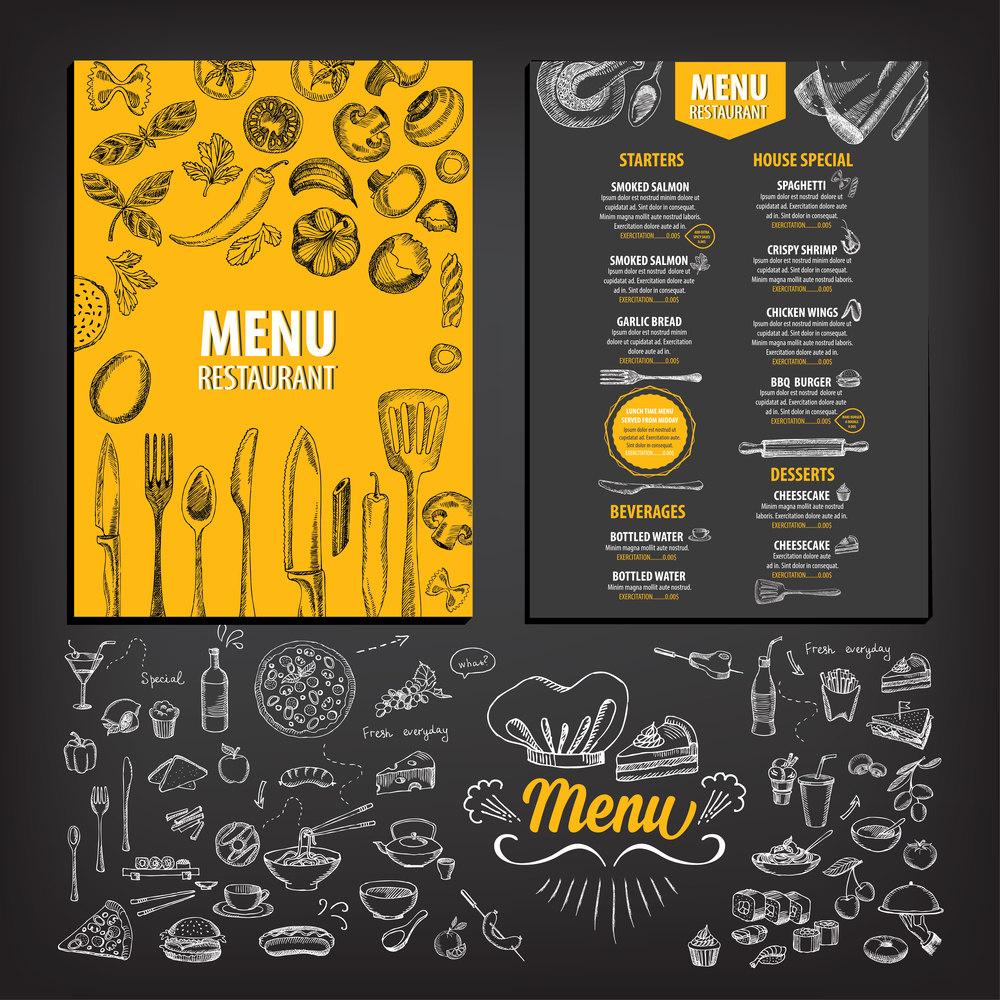A well-designed restaurant menu is an essential component of a successful restaurant operation. Careful menu preparation and placement not only helps restaurants make money, but it also makes ordering easier for customers. Your restaurant menu is much more than a piece of paper with a list of the dishes you serve, along with a description and price. It can also be used to upsell your dishes if it is carefully designed with the help of an experienced food menu designer.
To Build a Perfect Restaurant Menu, Use These Fantastic Menu Design Tips
Menu engineering takes a lot of thought, and we’ve narrowed it down to seven menu design rules that please customers and tempt them to spend more.
- Promote the highest-profitable products
Your most valuable item is one that uses low-cost materials, takes little time to prepare, and can be sold at a higher price. This item should be illustrated in the menu card or displayed on the table as a regular or weekly special item that draws the customer’s attention. Alternatively, you should include it in the ‘Chef’s Favorite’ section to entice consumers to order it.
- Make use of relative pricing
Playing on a customer’s psychology will help the menu design reach its maximum potential. Menu engineering is one of the most significant elements of restaurant management. Consumers are likely to order less expensive dishes in comparison to the expensive ones. Place your low-cost, high-profit dish next to an expensive dish that complements the previous item perfectly. As a result, you will highlight the more expensive dish, which will complement the more affordable item and encourage your guests to order more. You can take help from an experienced top food menu designer like Sprak Design to design the perfect menu.
- Monitor the size of the menu
Customers can be confused by a large menu design with too many cuisine options. You can reduce the menu size, reduce the variety of raw ingredients needed, improve staff productivity to properly prepare and present the food, and help your customers make a fast decision by focusing on a particular cuisine. You may also introduce rare, regional specialties to compete with restaurants that serve similar cuisines.
Furthermore, maintaining a large raw material inventory for various types of cuisines is too difficult, while dishes that use the same ingredients help you minimize raw material waste and the time it takes to prepare them. It is always a good idea to prepare the dish’s foundation, such as a gravy that can be used in many dishes, ahead of time.
- Maintain a clutter-free menu design
The menu’s layout should be simple and uncluttered. With the assistance of a capable food menu designer, you can accomplish this. Divide the restaurant menu into reasonable sections such as Drinks, Beverages, Pizzas/Pasta, and Desserts using lines or boxes. The font on the restaurant menu should be bold, appealing to the eye, and easily recognizable. The menu’s theme should fit the restaurant’s overall design, including font style, color, and overall design.
As a consequence, the menu card and the environment may have a cuisine-centric look and feel that instantly attracts individuals to the food. At the same time, keep in mind that too many graphics might appear cluttered and divert attention away from the menu items.
- Don’t forget to provide a description
Many customers may be unfamiliar with delicacies, especially exotic ones. A brief menu summary describing the dish’s essential ingredients could help guests figure out what they want and what to order. You may also provide photos of the dish, but make sure the dish matches the image definition. In a nutshell, write a quick, engaging copy that customers will understand.
- Check to see if the menu is updated
The menu needs to be regularly updated. You can use the menu performance reports to figure out which menu items aren’t driving sales and then remove them from the menu. What are the most common menu items? This will reveal what aspects of your restaurant your customers like the most. You can create new menu items based on those menu items and offer them to your customers.
- Give your dishes a makeover
Give your menu items a new lease on life by giving them a new spin. Experiment with various ingredients to create new flavors for the favorite dishes.
Conclusion
Finally, remember that a menu is more than a piece of paper listing all of your restaurant’s dishes and their prices; it is also the first step in selling your food. Customers can place more orders if your menu is visually pleasing, which will increase sales at your restaurant. Look at here to find restaurant menu design services with the help of Sprak Design, the most trusted food menu designer. In addition, restaurant management software might be able to assist you in menu engineering in a way that no other tool can. The essence of menu engineering is that the best-performing food products are elevated to the top.
Even if you offer choices, try to include special menus, both seasonal and festive, so that customers can return for more. You must also prioritize your online menu. We hope that by using these menu engineering tips, you will be able to develop a fantastic restaurant menu that will increase your profits.
